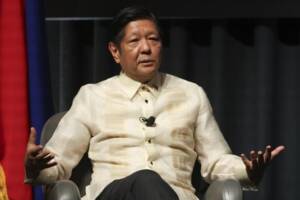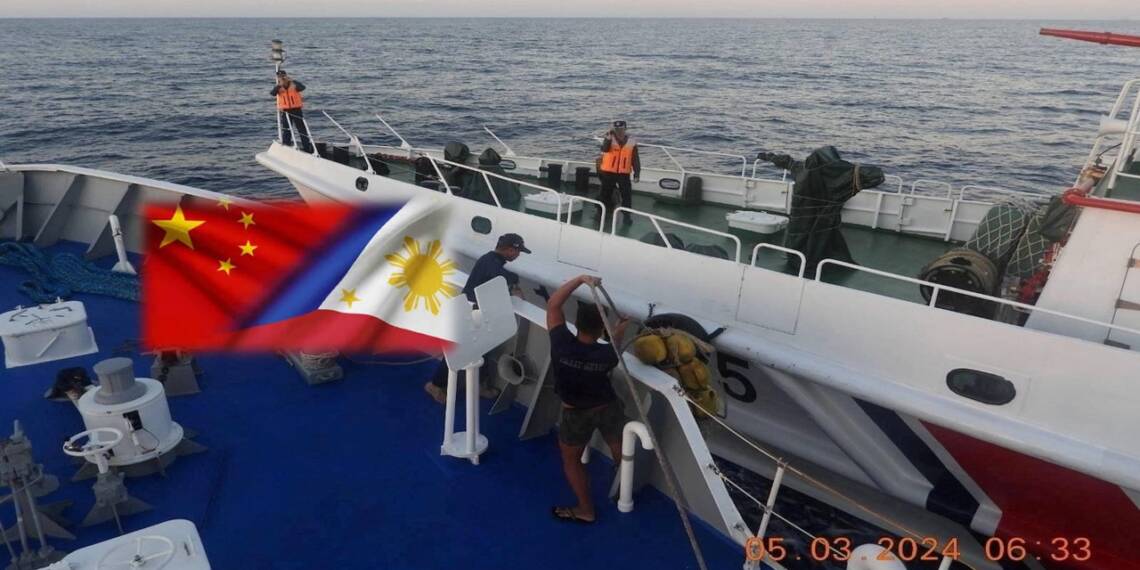On Tuesday, the Philippines raised allegations against China, asserting that a China Coast Guard vessel impeded its mission to replenish troops in the South China Sea. Jay Tarriela, spokesperson for the Philippine Coast Guard, claimed that the Chinese vessel engaged in hazardous maneuvers, obstructing the BRP Sindangan—an escorting Philippine Coast Guard ship. The intended destination of the resupply mission was Second Thomas Shoal, housing the grounded warship BRP Sierra Madre. This incident marks the latest confrontation between the Philippines and China in the disputed waters. The Philippines contends that China’s actions disrupted its efforts to sustain military operations in the region, adding a new chapter to the ongoing tensions between the two nations in the South China Sea.
Shortly after the initial collision, boats from China and the Philippines encountered another confrontation in the disputed waters. In this subsequent incident, two Chinese Coast Guard vessels employed water cannons against a Philippine supply boat, resulting in injuries to four individuals on board, as reported by a Philippine government task force.
Join us on Telegram: https://t.me/tfiglobal
In response to the event, the Chinese Coast Guard issued a statement attributing full responsibility to the Philippines. The statement asserted that the Philippines had breached promises, engaged in provocation through extortion tactics, sensationalized the narrative, and persistently undermined the peace and stability of the South China Sea.
The South China Sea, a geopolitical hotspot, has witnessed multiple clashes between China and the Philippines, marked by escalating tensions and verbal exchanges in recent weeks. Disputes arose when the Philippine Coast Guard refuted China’s assertion that a Philippine fisheries vessel intruded into Beijing’s waters, clarifying that it was patrolling near Scarborough Shoal.
Read More: China Showcases Naval Might with Enhanced Coast Guard Fleet
Philippine President Ferdinand Marcos Jr., addressing the Lowy Institute think tank in Australia, emphasized Manila’s commitment to collaborating with Beijing for South China Sea dispute resolution. However, he underlined that Manila would persist in asserting its stance if issues related to sovereignty and maritime rights were disregarded.

In January, a verbal dispute unfolded between Manila and Beijing over President Marcos’ congratulatory message to Taiwan’s incoming leader, Lai Ching-te, who held a skeptical stance toward China. China’s response urging Marcos to “read more books” about the Taiwan issue prompted Philippine Defense Secretary Gilberto Teodoro Jr. to criticize Beijing for resorting to “low-level and gutter talk,” characterizing the exchange as undiplomatic and disrespectful.
In 2023, China employed assertive measures, including deploying water cannons, to affirm its sovereignty in the contested maritime region. Heightened tensions ensued when Beijing intentionally collided with a Philippine vessel during a resupply mission conducted by Manila.
Read More: Taiwan and China Clash Over Kinmen Island Inspections
Following this incident, the two nations convened for a bilateral consultation in January, where an agreement was reached to enhance maritime communication.
Hence, recent maritime clashes underscore escalating tensions between China and the Philippines in the South China Sea. Ongoing diplomatic efforts seek communication improvement for regional stability.








